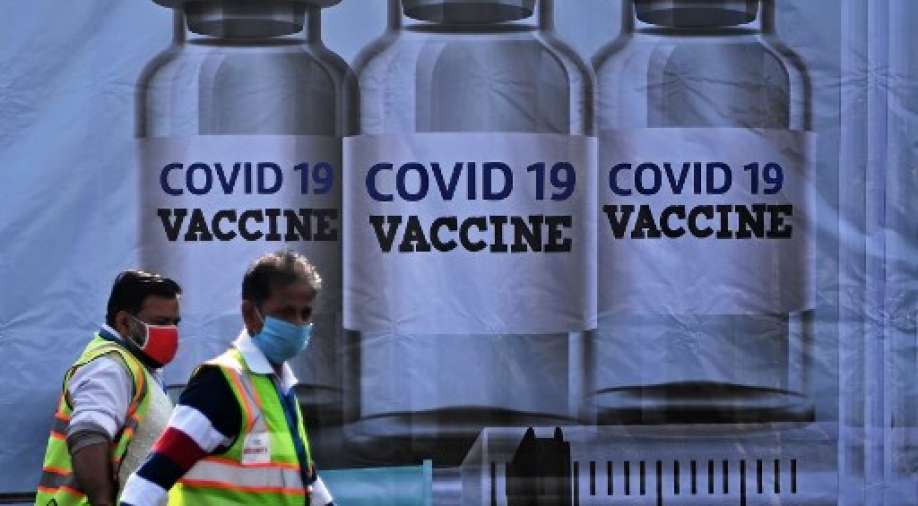A large proportion of Indian population still remains vulnerable to novel coronavirus, the third serosurvey conducted by the Indian Council of Medical Research (ICMR) has revealed.
According to Indian Council of Medical Research (ICMR)’s third national serosurvey over 21 per cent of the population, aged 10 years and above, showed evidence of past exposure to COVID-19.
Sero-surveys are conducted by taking blood samples and checking for a specific class of antibodies called IgG that appear within two weeks of an infection.
The prevalence of the infection has been found among 25.7 per cent of healthcare workers, according to the Indian Council of Medical Research (ICMR) third national serosurvey conducted between December 17 last year and January 8.
Presenting the findings of the survey at a media briefing, ICMR Director General Dr Balram Bhargava said 21.4 per cent of the 28,589 people, aged 18 years and above, surveyed during the period showed evidence of past exposure to the coronavirus infection. While 25.3 per cent of children aged 10 to 17 years from the same number of surveyed population have had the disease, he said.
Urban slums (31.7 per cent) and urban non-slums (26.2 per cent) had a higher SARS-CoV-2 prevalence than those in rural areas (19.1 per cent), Bhargava said, adding that the seroprevalence was 23.4 per cent among individuals above 60 years of age.
Besides, blood samples of 7,171 healthcare workers were also collected during the same period and the seroprevalence was found to be 25.7 per cent, the ICMR director general said.
“Overall seroprevalence is 21.5 per cent of the population.A large proportion of the population still remains vulnerable, which calls for no complacency in following COVID-19-appropriate behaviour by all. This apart, it points out the necessity of vaccine,” Bhargava said.
The seroprevalence was found to be 26.6 per cent among surveyed doctors, 25.4 per cent among paramedical staff, 25.3 per cent among field staff and 24.9 among administration staff, he said.?? ? “Thus, the prevalence of the infection has been found amongst 25.7 per cent of healthcare workers,” Bhargava said.
The latest survey has been conducted in the same 700 villages and wards in 70 districts of 21 states which were selected during the first and second rounds of the serosurvey held previously in May-June and August-September last year respectively.
Among the surveyed male population, the sero-prevalence was 20.3 per cent, while it was 22.7 per cent among the surveyed female population.
The seroprevalence was 19.9 per cent in the age group of 18-44 years, 23.4 per cent among 45-60 years and 23.4 per cent among the surveyed population above 60 years of age.
On the coronavirus situation in the country, Union?Health Secretary Rajesh Bhushan said India’s COVID-19 cumulative positivity rate has declined to 5.42 per cent.?The weekly positivity rate (last week) was recorded at 1.82 per cent, he said.
Bhushan said that 47 districts have not reported any new case of COVID-19 and 251 districts have not registered any new deaths in the last three weeks.
Two states — Kerala (69,365) and Maharashtra (38,762) — account for 70 per cent of the total active cases in the country, he said. The worldwide COVID-19 situation is still worrisome, Bhushan said, adding that some countries have seen multiple peaks, while some have seen surge in cases at least twice.
“In India, cases are declining. But we still have to follow COVID-19-appropriate behaviour,” the Union Health Secretary said.
While countries like the US, the UK, Brazil, Germany and Russia have shown a surge in deaths for a second time, India is seeing a decline in the number of COVID-19 deaths.
Niti Aayog Member V K Paul said the current serosurvey shows that even now, the infection can spread to more than 75 per cent people.
He stated that hence, it is very crucial to strictly following COVID-appropriate behaviour.
We have seen in many countries how the graph came down but suddenly saw a spike. A big proportion of our population is still vulnerable, he said.
However, Paul also mentioned that through the national mission for vaccination, “we will be able to overcome the pandemic in a better way”.
He appealed to the media and the public to be a part of this drive. ?I request you to continue to promote positive behaviour and acceptance of vaccines, and see that science is driving the whole process of pandemic fight in this great country, Paul said.
He also mentioned that the speed with which 45 per cent of healthcare workers (HCWs) have already been vaccinated is evidence that the hesitancy has gone and confidence has grown among the citizens and HCWs.
(With inputs from agencies)
This article is auto-generated by Algorithm Source: www.wionews.com


